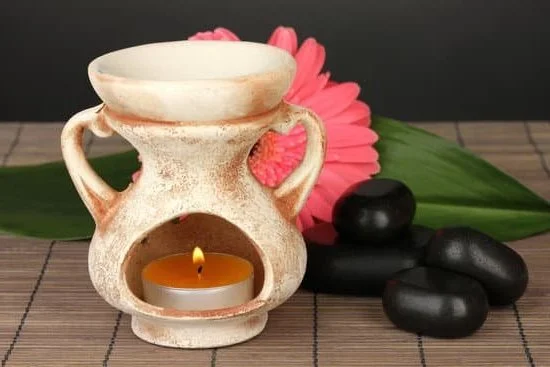Are aromatherapy diffusers safe for dogs? Aromatherapy has gained popularity in recent years as a natural way to promote relaxation and well-being. Aromatherapy diffusers are commonly used to disperse essential oils into the air, creating a pleasant and calming atmosphere. However, when it comes to using aromatherapy diffusers around dogs, there are important considerations to keep in mind to ensure their safety and well-being.
Dogs have an incredibly sensitive sense of smell, far more acute than that of humans. This means that the use of essential oils and aromatherapy diffusers can potentially have a significant impact on dogs, both positive and negative. While some essential oils can be beneficial for dogs, others can pose risks if not used carefully.
In this article, we will explore the potential risks of using aromatherapy diffusers around dogs, as well as safe essential oils for aromatherapy. We will also discuss proper usage and precautions when using aromatherapy diffusers near dogs, as well as alternative aromatherapy methods that may be safer for our canine companions. By understanding these factors, we can make informed decisions about whether or not aromatherapy diffusers are safe for our furry friends.
Understanding the Sense of Smell in Dogs
Dogs have an incredibly powerful sense of smell, and it is important for pet owners to understand how this impacts the use of aromatherapy diffusers around their furry friends. The olfactory system in dogs is much more sensitive than humans, with up to 300 million scent receptors compared to our mere 5-6 million. This heightened sense of smell means that dogs are particularly susceptible to the effects of aromatherapy diffusers, both positive and negative.
It is essential for dog owners to recognize that what may be a pleasant aroma to us can be overwhelming or even harmful to their canine companions. For example, certain essential oils that are commonly used in aromatherapy, such as peppermint or tea tree oil, can be toxic to dogs if ingested or inhaled in large amounts. It’s also important to note that dogs may have individual sensitivities or allergies to certain scents, just as humans do.
When using aromatherapy diffusers around dogs, it’s crucial to be mindful of their heightened sense of smell and take precautions to ensure their safety and well-being. Here are some tips for safely using aromatherapy diffusers around dogs:
- Research safe essential oils: Prioritize using essential oils that are known to be safe for dogs, such as lavender or chamomile.
- Dilute essential oils: When using a diffuser, always dilute the essential oils properly according to the manufacturer’s instructions.
- Monitor your dog’s behavior: Pay attention to your dog’s behavior when using an aromatherapy diffuser. If they show any signs of discomfort or stress, such as excessive drooling or trying to avoid the scent, discontinue use immediately.
By understanding the sensitivity of a dog’s sense of smell and taking necessary precautions, pet owners can safely incorporate aromatherapy into their home without putting their furry friends at risk.
Potential Risks of Aromatherapy Diffusers for Dogs
While aromatherapy diffusers can provide many benefits to humans, they may pose potential risks to dogs. One of the main concerns is that essential oils diffused into the air can be too concentrated and overwhelming for a dog’s sensitive sense of smell. This can lead to respiratory issues, allergic reactions, or other health problems in dogs. Additionally, some essential oils commonly used in aromatherapy can be toxic to dogs if ingested or absorbed through their skin.
Another risk of using aromatherapy diffusers around dogs is the potential for accidental exposure. Dogs are curious animals and may come into direct contact with the diffuser or knock it over, leading to unintended ingestion or absorption of essential oils. Furthermore, improper usage of aromatherapy diffusers, such as leaving them running in enclosed spaces without proper ventilation, can increase the concentration of essential oils in the air and pose a higher risk to dogs.
It’s important for pet owners to be aware of the potential risks associated with using aromatherapy diffusers around dogs and take necessary precautions to ensure their safety. Understanding which essential oils are safe for use around dogs and how to properly diffuse them is crucial in preventing any harm or negative health effects on pets.
When considering using aromatherapy diffusers around dogs, it’s always best to consult with a veterinarian to determine the safest approach for your furry friend.
| Potential Risks | Precautions |
|---|---|
| Concentration of essential oils can be overwhelming for a dog’s sense of smell | Properly dilute essential oils and use them sparingly |
| Possible accidental exposure through ingestion or absorption | Keep diffusers out of reach from pets and use in well-ventilated areas |
| Unsafe essential oils that may be toxic if ingested or absorbed through a dog’s skin | Research safe essential oils before using them around pets and consult with a veterinarian if unsure |
Safe Essential Oils for Aromatherapy Around Dogs
Choosing Safe Essential Oils
When it comes to using aromatherapy diffusers around dogs, it is crucial to select essential oils that are safe for them. Some essential oils can be harmful or even toxic to dogs if inhaled or ingested. It is important to do thorough research and consult with a veterinarian before using any essential oils around your furry friend. Some of the safe essential oils for use around dogs include lavender, chamomile, and frankincense.
Avoiding Harmful Essential Oils
On the other hand, there are several essential oils that should be avoided when using aromatherapy diffusers around dogs. These include tea tree oil, cinnamon, citrus-based oils, and pennyroyal. These oils can cause adverse reactions in dogs such as skin irritation, respiratory issues, and even liver damage. It is important to read the labels carefully and ensure that the essential oils being used are pet-safe.
Diluting Essential Oils
Even with safe essential oils, it is important to dilute them properly before using them in aromatherapy diffusers around dogs. The strong concentration of undiluted essential oils can be overwhelming for a dog’s sensitive sense of smell and may lead to discomfort or irritation.
It is recommended to mix a small amount of the chosen essential oil with a carrier oil before adding it to the diffuser. This will help to lessen the intensity of the scent and make it safer for your canine companion.
Proper Usage and Precautions When Using Aromatherapy Diffusers Around Dogs
When using aromatherapy diffusers around dogs, it is important to take certain precautions to ensure the safety of your pet. One of the most important things to consider is the type of essential oils that you are using.
Some essential oils can be toxic to dogs, so it is crucial to do thorough research and consult with a veterinarian before using any specific oils around your pet. Additionally, always make sure that the room where the diffuser is used is well-ventilated and that your dog has the option to leave the room if they want to.
It is also essential to use a quality aromatherapy diffuser that does not overheat or produce too much vapor. Excessive heat and vapor can be irritating to a dog’s sensitive respiratory system. Be mindful of where you place the diffuser and keep it out of reach of your pet to prevent them from knocking it over or getting too close to the diffusing mist, which could cause eye irritation.
Furthermore, always start with small amounts of essential oils when introducing aromatherapy to your dog, and closely monitor their behavior for any signs of distress or discomfort. If you notice any adverse reactions such as sneezing, coughing, wheezing, or excessive drooling, remove your pet from the room with the diffuser immediately.
| Essential Oils Safe for Dogs | Potentially Harmful Essential Oils for Dogs |
|---|---|
| Lavender | Tea Tree |
| Chamomile | Cinnamon |
| Frankincense | Citrus (Lemon, Orange, Lime) |
Signs and Symptoms of Aromatherapy Diffuser Overexposure in Dogs
Aromatherapy diffusers are becoming a popular way to create a pleasant and relaxing atmosphere at home, but it’s important for pet owners to be aware of the potential risks that these devices may pose to their furry friends. Dogs have a much more sensitive sense of smell compared to humans, which means that using certain essential oils in aromatherapy diffusers can have adverse effects on their health.
In this section, we will discuss the signs and symptoms of aromatherapy diffuser overexposure in dogs.
Signs and symptoms of aromatherapy diffuser overexposure in dogs may include:
- Respiratory issues: if a dog is exposed to too much of an essential oil through an aromatherapy diffuser, they may experience difficulty breathing, coughing, or wheezing.
- Gastrointestinal problems: ingesting certain essential oils or inhaling them in large quantities can lead to stomach upset, vomiting, or diarrhea in dogs.
- Skin irritation: some essential oils can cause skin irritation or allergic reactions when they come into contact with a dog’s skin. This may manifest as redness, itching, or inflammation.
It’s important for pet owners to be vigilant and monitor their dog’s behavior when using an aromatherapy diffuser at home. If any of these signs and symptoms are observed, it is crucial to remove the dog from the area with the diffuser and seek veterinary care if necessary. Proper usage and precautions must be taken to ensure the safety and well-being of our canine companions when practicing aromatherapy at home.
Alternative Aromatherapy Methods for Dogs
When it comes to using aromatherapy around dogs, there are alternative methods that can be just as effective in promoting relaxation and overall well-being. These alternative methods are perfect for pet owners who want to enjoy the benefits of aromatherapy without putting their furry friends at risk.
Topical Application
One alternative method for using aromatherapy around dogs is through the topical application of essential oils. By diluting dog-safe essential oils with a carrier oil, such as coconut or jojoba oil, pet owners can apply the mixture to their dog’s fur or paw pads. This method allows dogs to experience the therapeutic benefits of essential oils without inhaling them, reducing the risk of overexposure.
Aromatherapy Massage
Another safe way to introduce aromatherapy to dogs is through massage. By adding a few drops of dog-safe essential oils to a carrier oil, pet owners can give their furry companions a calming and soothing massage. This not only provides physical relaxation but also allows dogs to benefit from the aromatic properties of the essential oils.
Aromatherapy Collars and Bedding
For a more passive approach, pet owners can also consider using aromatherapy collars or bedding for their dogs. Aromatherapy collars are designed to hold small amounts of diluted essential oils that can provide a continuous but controlled exposure for dogs throughout the day. Additionally, scenting bedding with dog-safe essential oils can create a relaxing environment for dogs while they rest.
By considering these alternative methods, pet owners can still incorporate aromatherapy into their dog’s routine while minimizing potential risks associated with diffusing essential oils in the air. Ultimately, it’s important for pet owners to prioritize their dog’s safety and well-being when exploring aromatherapy options.
Conclusion
In conclusion, the use of aromatherapy diffusers around dogs can pose potential risks and it is important for pet owners to be cautious when using these products. While some essential oils can have benefits for dogs, there are also many that can be harmful or toxic to them. It is crucial for pet owners to do thorough research and consult with a veterinarian before using any kind of aromatherapy around their pets.
Additionally, proper usage and precautions should always be taken when using aromatherapy diffusers around dogs. This includes using high-quality, pure essential oils, diluting them properly, and ensuring that the diffuser is placed in a well-ventilated area. Monitoring the dog for any signs of distress or overexposure is also essential in ensuring their safety.
Ultimately, while aromatherapy can have potential benefits for dogs, pet owners should consider alternative methods such as herbal sprays or natural calming collars as a safer option for providing aromatherapy to their pets. It’s important to prioritize the health and safety of our furry friends when considering the use of aromatherapy around them.
Frequently Asked Questions
Is It Safe to Have Essential Oil Diffuser Around Dogs?
It is generally safe to have an essential oil diffuser around dogs, but caution and moderation are key. Some essential oils can be harmful to dogs if ingested or inhaled in large quantities, so it’s important to research and use oils that are considered safe for pets.
It’s also important to observe how your dog reacts to the diffuser and discontinue use if they show any signs of distress.
What Oils Are Not Safe to Diffuse Around Dogs?
Some essential oils that are not safe to diffuse around dogs include tea tree oil, clove oil, cinnamon oil, citrus oils (such as lemon, orange, or grapefruit), pennyroyal oil, pine oil, sweet birch oil, wintergreen oil, and ylang-ylang oil.
These oils can be toxic to dogs and may cause a range of issues from skin irritation to organ damage if inhaled in large amounts.
Is It Toxic for Dogs to Smell Essential Oils?
Inhaling certain undiluted essential oils directly or for prolonged periods of time can be toxic for dogs. Essential oils are highly concentrated substances that can overwhelm a dog’s sensitive sense of smell and potentially cause respiratory issues, irritation, or toxicity.
It’s best to diffuse essential oils in a well-ventilated area where your dog has the option to move away from the scent if it becomes overwhelming for them.

Are you looking for a natural way to improve your health and wellbeing?
If so, aromatherapy may be the answer for you.





